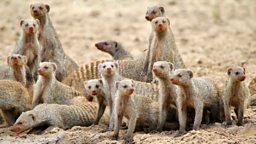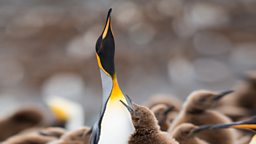Main content
King penguins
- The king penguin chick looks so different to the adult that they were first described as a completely different species, the “woolly penguin”.
- There are more than 2.2 million of them found in the world, but the biggest population is on South Georgia with 450,000 breeding pairs and their chicks.
- When the chicks reach around six weeks old, they join a group of chicks known as a crèche, allowing both parents to go foraging at the same time, in order to bring back enough food for their offspring - The crèche provides them with protection from predators, as well as the benefit of collective warmth.
- Chicks often undergo periods of up to 3 months between feeds.
- Healthy chicks have been shown to be able to survive up to about 5 months without being fed.
- It is quite common for chicks to lose 50% of their body weight whilst waiting for food.
- Chicks eventually fledge at around 10 to 13 months old, so the king penguin typically only produces two chicks every three years.
- King penguins breed between October and December.
- King penguin parents highly invest in their reproductive cycles. The males must begin the cycle with enough fat stored to sustain them through courtship, egg-laying and the first part of incubation. By the end of their first incubation shift the males have typically lost 30 percent of their body weight.
- They have been known to travel up to 500 km from their breeding grounds to forage, and will bathe in the ocean before fishing.
- King penguins are one of only two penguin species that do not build nests. Instead of building a nest, king penguins carry their eggs and young around on their feet during development. The lack of a nest also adds to the noise level of the colonies because they use their unique voice system to call to both their young and their mates.






